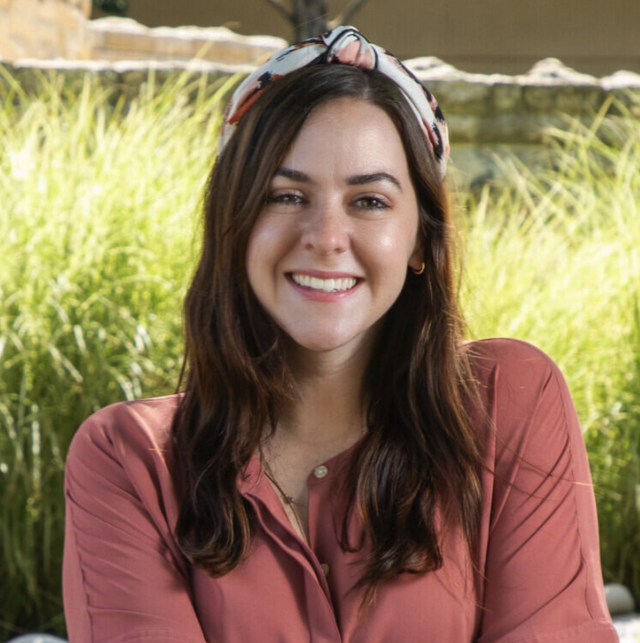News

26 July 2023
Road to Research: A Q&A with Scientific Project Manager Victoria Hassebroek
A Q&A with Scientific Project Manager Victoria Hassebroek
Read Article
The Genome Engineering team assists Stowers Institute researchers in the precise and specific alteration of genetic material of research organisms and cultured cells.

The Genome Engineering team provides expertise in CRISPR technology and its application in several model systems, including mouse, zebrafish, cavefish, fruit fly, sea anemone, apple snail, and cultured cell lines. Projects begin with the custom design and preparation of guideRNA and homology-directed repair donor templates. Next, the team uses these custom molecular reagents to engineer cultured cell lines directly. For animal model projects, the team prepares the custom reagents and hands them off to the Stowers’ animal technology centers and researchers for embryo delivery.
To identify the engineered mutations, the team provides a targeted deep sequencing service. This allows quick identification of successfully mutated samples and enables the team to process hundreds of animal tissue and cell samples each week.
The Genome Engineering team also provides support for pooled screens. These services encompass genome-wide CRISPR screens, nanobody screens, site-saturation mutagenesis, or novel pooled screens. Services include building or acquiring new pooled libraries and the preparation and validation of libraries by next-generation sequencing. Following a screen, the resulting cell populations are processed by the team for genomic DNA purification, target amplification, and next-generation sequencing.
Genome Engineering now offers a service utilizing TAIL-PCR to identify random integration events. The team has successfully used this method in killifish, sea anemone, fruit fly, and zebrafish.
The team is also responsible for maintaining and distributing 137,000+ clones and vectors. The 34 collections of clones include yeast, fly, mouse, human, and expression vectors.
Team Contact
Head, Genome Engineering
Stowers Institute for Medical Research
In 2024 Hassebroek was named Head of Genome Engineering where she works with a team and researchers to generate CRISPR modified cell lines, zebrafish, mice, and many more organisms.

In 2024 Hassebroek was named Head of Genome Engineering where she works with a team and researchers to generate CRISPR modified cell lines, zebrafish, mice, and many more organisms.
The Genome Engineering team manages projects to generate knockouts, large insertions and deletions, and point mutations in various model organisms. The team customizes each project to produce it as efficiently as possible and use the latest CRISPR technology methods.
Additional services are offered for pooled screens, TAIL-PCR, and clone and vector collections.
Pooled screen support includes building and validating pooled libraries and processing samples resulting from pooled screens.
The TAIL-PCR service locates random integration events in genomic DNA.
The Institute’s clone and vector collections are maintained and distributed to in-house researchers and contain greater than 137,000 clones for yeast, fly, mouse, and human.

All genome engineering projects start with a targeted double-strand break and the design of a guideRNA. For large insertion projects that require a homology-directed repair donor template, the team designs and produces long single-stranded DNA.

These services include cell line modification using custom CRISPR reagents. This comprises treating the cell line, maintenance of cells, and single-cell clone identification by working with Cells, Tissues, and Organoids. The Genome Engineering team prepares custom CRISPR reagents for delivery to animal embryos by collaborating with multiple Technology Centers.

Each week the team processes hundreds of samples from cells and animal tissues to detect and identify the precisely engineered mutations. The powerful workflow the team has built around targeted deep sequencing enables the successful completion of genome engineering projects.

A pooled screen is a powerful way to look across a genome or a massive number of sequences to identify important genes of interest, effects on expression, or significant sequence motifs.
The Genome Engineering team acquires, prepares, and validates pooled libraries as an Institute resource. To coordinate the total pooled screen workflow, the team collaborates with other teams to track the progress of these projects. Once resulting cell populations from a screen are delivered, the team does genomic DNA purification, target amplification, and preparation for NGS.
News

26 July 2023
A Q&A with Scientific Project Manager Victoria Hassebroek
Read Article
News

20 June 2023
Anoja Perera is the Director of Sequencing and Discovery Genomics at the Institute. She shares more about how her role at the institute supports our labs and scientific research.
Read Article
Press Release
24 January 2023
Researchers have discovered what prolonged physical inactivity may mean for humans many thousands of years down the road by studying cavefish.
Read Article
Conkright-Fincham J, Tomomori-Sato C, McGhee R, Leslie EM, Beucher CJ, Weems LE, Sato S, Redwine WB, Weaver KJ, Miller BD, Delventhal KM, Kary JJ, Koebbe AB, Dean A, Witt JL, Remy LM, Parmely TJ, Zhao C, Wang Y, Conaway JW, Unruh JR. Bio-protocol. 2022;12:e4301. doi: 4310.21769/BioProtoc.24301.
Weems JC, Slaughter BD, Unruh JR, Weaver KJ, Miller BD, Delventhal KM, Conaway JW, Conaway RC. J Biol Chem. 2021;297:100862.
Ikmi A, McKinney SA, Delventhal KM, Gibson MC. Nat Commun. 2014;5:5486, doi10.1038/ncomms6486.
Starting a TALEN core facility
Delventhal K. Journal of Biomolecular Techniques: JBT 24(Suppl) May 2013
Friederichs JM, Ghosh S, Smoyer CJ, McCroskey S, Miller BD, Weaver KJ, Delventhal KM, Unruh J, Slaughter BD, Jaspersen SL. PLoS Genet. 2011;7:e1002365.
Mutations in the MESP2 gene cause Spondylothoracic Dysostosis/Jarcho-Levin Syndrome
Cornier AS, Staehling-Hampton K, Delventhal KM, Saga Y, Caubet JF, Sasaki N, Ellard S, Young E, Ramirez N, Carlo SE, Torres J, Emans JB, Turnpenny PD, Pourquié O. Am J Hum Genet. 2008;82:1334-1341.
